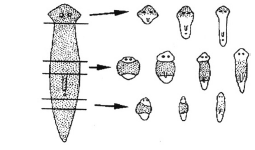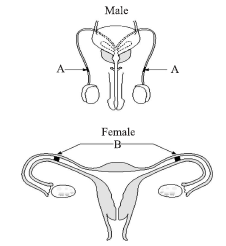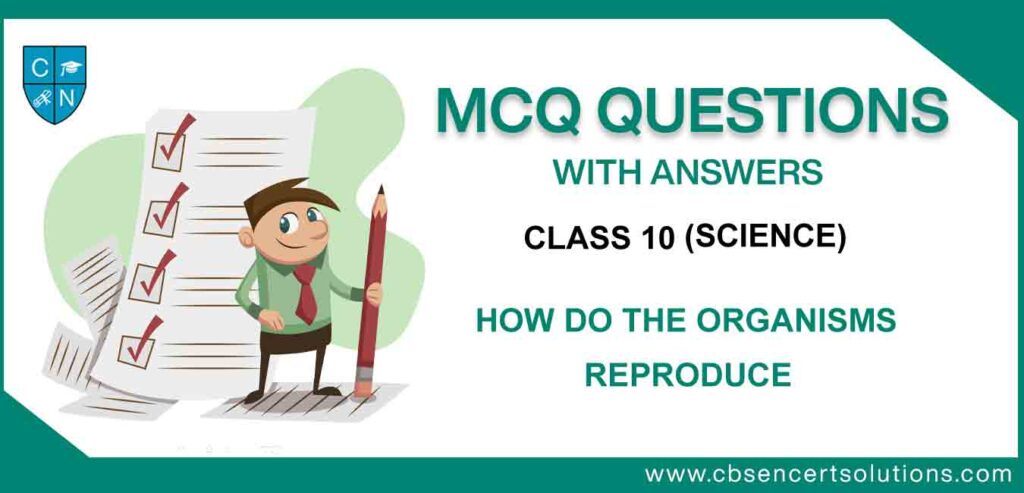Students can refer to the following How do the Organisms Reproduce MCQ Questions For Class 10 with Answers provided below based on the latest curriculum and examination pattern issued by CBSE and NCERT. Our teachers have provided here a collection of How do the Organisms Reproduce MCQ Question for Class 10 covering all topics in your textbook so that students can assess themselves on all important topics and thoroughly prepare for their exams
How do the Organisms Reproduce MCQ Questions for Class 10 with Answers
We have provided below How do the Organisms Reproduce MCQ Questions for Class 10 with answers which will help the students to go through the entire syllabus and practice multiple choice questions provided here with solutions. As How do the Organisms Reproduce MCQs for Class 10 Science pdf download can be really scoring for students, you should go through all problems provided below so that you are able to get more marks in your exams.
How do the Organisms Reproduce MCQ Questions for Class 10
Question. The anther contains
(a) Sepals
(b) Ovules
(c) Carpel
(d) Pollen grains
Answer
D
Question. Union of male and female gametes forms
(a) Egg
(b) Embryo
(c) Zygote
(d) Spore
Answer
C
Question. The number of chromosomes in human ovum is
(a) 21
(b) 22
(c) 23
(d) 24
Answer
C
Question. The common passage meant for transporting urine and sperms in males is
(a) Ureter
(b) Vas deferens
(c) Urethra
(d) Anus
Answer
C
Question. The process where the unfertilised egg is released out of the body with the blood used to nourish the embryo is known as
(a) Menstruation
(b) Fertilisation
(c) Germination
(d) Pollination
Answer
A
Question. Unisexual flowers contain
(a) Both stamen and carpel
(b) Only stamen
(c) Only carpel
(d) Either stamen or carpel
Answer
D
Question. In a potato, vegetative propagation takes place by:
(a) root
(b) leaf
(c) stem tuber
(d) grafting
Answer
C
Question. Anemophily is the pollination by –
(a) Birds
(b) Rain
(c) insects
(d) Wind
Answer
D
Question. Assertion: Ovary releases one egg every month.
Reason: The lining of uterus is always thick and spongy.
(a) Both A and R are true and R is the correct explanation of A.
(b) Both A and R are true but R is not the correct explanation of A.
(c) A is true but R is false.
(d) A is false but R is true.
(e) Both A and R are false.
Answer
C
Question. Along the path of the vas-deferens the secretions of which gland provide nutrition to the sperms?
(a) Prostate glands
(b) Seminal vesicles
(c) Scrotum
(d) Urinary bladder
Answer
B
Question. Which of this is seminal fluid?
(a) Prostate gland
(b) Cowper’s gland
(c) Seminal vesicle
(d) all of these
Answer
C
Question. The fertilisation of human egg by the sperm takes place in
(a) vagina
(b) uterus
(c) ovary
(d) oviduct
Answer
D
Question. When a sperm is deposited into the vagina which route does it travel ?
(a) Vagina → Oviduct → Uterus → Cervix
(b) Vagina → Ovary → Uterus → Oviduct
(c) Vagina → Cervix → Uterus → Oviduct
(d) Vagina → Uterus → Cervix → Oviduct
Answer
C
Question. When the foetus is growing inside the uterus it needs nutrients. Which part provides these nutrients?
(a) Placenta
(b) Amniotic sac
(c) Oviduct
(d) Uterus
Answer
A
Question. Assertion: In human beings, the female. play a major role in determining the sex of the offspring.
Reason: Women have two X chromosomes.
(a) Both A and R are true and R is the correct explanation of A.
(b) Both A and R are true but R is not the correct explanation of A.
(c) A is true but R is false.
(d) A is false but R is true.
(e) Both A and R are false.
Answer
D
Question. Which of the following is a primary sex organ in a mammal?
(a) Ovary
(b) Vagina
(c) Uterus
(d) Mammary glands
Answer
A
Question. Which part of the flower forms the fruit?
(a) Whole flower
(b) Only stamens and carpel
(c) Only ovary
(d) Only carpel
Answer
C
Question. Many unicellular organisms reproduce by the process of
(a) fission
(b) ovulation
(c) regeneration
(d) non-disjunction
Answer
A
Question. Anemophily is the pollination by:
(a) Birds
(b) Rain
(c) insects
(d) Wind
Answer
D
Question. When an organism breaks into a number of parts and each part develop into an individual, it is called:
(a) Budding
(b) Binary fission
(c) Regeneration
(d) Spore formation
Answer
C
Question. Which is the most common method of reproduction in majority of fungi and bacteria?
(a) Budding
(b) Spore formation
(c) Binary fission
(d) Multiple fission
Answer
B
Question. A pair of duct arising from testis, which carry sperms are
(a) fallopian tube
(b) vas deferens
(c) oviduct
(d) urethra
Answer
B
Question. Site of fertilization in mammals is
(a) ovary
(b) uterus
(c) vagina
(d) fallopian tube
Answer
D
Question. Progesterone is secreted by
(a) corpus luteum
(b) thyroid
(c) thymus
(d) testis
Answer
A
Question. The embryo sac of a typical dicot at the time of fertilization is –
(a) 8 called
(b) 7 celled
(c) 6 called
(d) 5 celled
Answer
B
Question. The process of reproduction which involves only a single parent to form an individual
(a) sexual reproduction
(b) asexual reproduction
(c) none of these
(d) Both A & B are correct
Answer
B
Question. Cowper’s glands are found in
(a) male mammals
(b) female mammals
(c) male amphibians
(d) female amphibians
Answer
A
Question. Loss of reproductive capacity in women after age of 45 years is
(a) menstruation
(b) ageing
(c) menopause
(d) menarche
Answer
C
Question. Development of egg without fertilization is
(a) parthenocarpy
(b) polyembryo
(c) parthenogenesis
(d) adventive embryony
Answer
C
Question. Anemophily is pollination by
(a) air
(b) water
(c) insects
(d) animal
Answer
A
Question. Release of oocytes from ovary is
(a) gestation
(b) ovulation
(c) parturition
(d) implantation
Answer
B
Question. Which of the following regenerated with the help of layering?
(a) Cactus
(b) Rose
(c) Mango
(d) Jasmine
Answer
D
Question. The period during adolescence when the reproductive tissues begin to mature is called
(a) ovyfetion
(b) puberty
(c) germination
(d) propagation
Answer
B
Question. Assertion: In male reproductive system, transport of sperm takes place in a fluid which also provide nutrition. Reason: Protective glands and seminal vesicles secret in the vas deferens.
(a) Both A and R are true and R is the correct explanation of A.
(b) Both A and R are true but R is not the correct explanation of A.
(c) A is true but R is false.
(d) A is false but R is true.
(e) Both A and R are false.
Answer
A
Question. In man, fertilization of ovum takes place in
(a) Vagina
(b) ovary
(c) uterus
(d) Fallopian tubes
Answer
D
Question. The process of release of eggs from the ovary is called
(a) menstruation
(b) reproduction
(c) insemination
(d) ovulation
Answer
D
Question. In Rhizopus, tubular thread like structures bearing sporangia at their tips are called
(a) filaments
(b) hyphae
(c) rhizoids
(d) roots
Answer
B
Question. At the time of entering into ovule, pollen tube has
(a) three male nuclei
(b) two male nuclei
(c) one gamete nucleus
(d) four male gametes
Answer
B
Question. During favourable conditions, Amoeba reproduces by
(a) multiple fission
(b) binary fission
(c) budding
(d) fragmentation
Answer
B
Question: Menstrual cycle is generally of
(a) 21 days
(b) 28 days
(c) 38 days
(d) 40 days
Answer
B
Question: Plants of desired qualities are produced by:
(a) Cutting
(b) Grafting
(c) Layering
(d) Any one of (a), (b),(c)
Answer
B
Question: Tunica albuginea is the covering around
(a) ovary
(b) testes
(c) kidney
(d) heart
Answer
B
Question: The vegetative reproduction in sweet potato is done by –
(a) stem
(b) leaf
(c) root
(d) flower
Answer
C
Question: Example of external fertilization is
(a) fish and frog
(b) frog and monkey
(c) dog and goat
(d) goat and fish
Answer
A
Question: Budding and fission are processes used by
(a) diocious species.
(b) hermaphroditic organisms.
(c) organisms requiring new gene combinations for each generation.
(d) asexually reproducing species.
Answer
D
Question: Gemmule formation in sponges is helpful in:
(a) Parthenogenesis
(b) Sexual reproduction
(c) Only dissemination
(d) Asexual reproduction
Answer
D
Question: Ovulation in mammals is caused by:
(a) FSH and TSH
(b) FSH and LH
(c) FSH and LTH
(d) LTH and LH
Answer
B
Question: In mammals, the testes lie in scrotal sacs due to
(a) presence of urinary bladder.
(b) presence of rectum.
(c) long vas-deferens.
(d) requirement of low temperature for spermatogenesis.
Answer
D
Question: The correct sequence of reproductive stages seen in flowering plants is
(a) gametes, zygote, embryo, seedling
(b) zygote, gametes, embryo, seedling
(c) seedling, embryo, zygote, gametes
(d) gametes, embryo, zygote, seedling
Answer
A
Question: In figure, the parts A, B and C are sequentially:
(a) cotyledon, plumule and radicle
(b) plumule, radicle and cotyledon
(c) plumule, cotyledon and radicle
(d) radicle, cotyledon and plumule
Answer
C
Question: In the figure of budding in Yeast, structures a, b, c and d should be labelled respectively as

(a) Nucleus of bud, bud, Yeast, nucleus
(b) Dividing nucleus of bud, bud, Yeast, nucleus
(c) Nucleus of bud, bud, Yeast, dividing nucleus of yeast
(d) Dividing nucleus of Yeast, Yeast, bud, nucleus of bud.
Answer
A
Question: The figure shown above illustrates which method of vegetative propagation?
(a) Bud formation
(b) Grafting
(c) Layering
(d) Spore formation
Answer
B
Question: The following figure represents :

(a) Budding in Hydra
(b) Budding in Planaria
(c) Regeneration in Planaria
(d) Regeneration in Hydra
Answer
C
Question: The diagrams below represent the reproductive systems in the human male and female.

The blockages shown at A and B would most likely interfere with the ability to
(a) transport gametes
(b) produce mature gametes
(c) eliminate waste products through the urethra
(d) express secondary sex characteristics
Answer
A
Question: Site of fertilization in mammals is
(a) ovary
(b) uterus
(c) vagina
(d) fallopian tube
Answer
D
Question: Vegetative propagation is possible by
(a) Root
(b) Stem
(c) Leaves
(d) All of these
Answer
D
Question: Ovaries produce
(a) oestrogen and progesterone
(b) oestrogen only
(c) progesterone only
(d) testosterone
Answer
A
Question: Seminiferous tubules are composed of
(a) Spermatogonia
(b) Glandular epithelium
(c) Sensory epithelium
(d) Germinal epithelium
Answer
D
Question: Cowper’s glands are found in
(a) male mammals
(b) female mammals
(c) male amphibians
(d) female amphibians
Answer
A
Question: Fertilization does not occur in which part?
(a) fallopian tube
(b) ampulla
(c) oviduct
(d) vagina
Answer
D
Question: Progesterone is secreted by
(a) corpus luteum
(b) thyroid
(c) thymus
(d) testes
Answer
A
Question: Oral-contraceptives prevent the
(a) fertilization
(b) ovulation
(c) implantation
(d) entrance of sperms in vagina
Answer
B
Question: The general method of asexual reproduction, in yeast fungus is –
(a) by spores
(b) by budding
(c) binary fission
(d) gemma
Answer
B
